I recently had the pleasure of watching a play I had written go up as part of the New Works New Haven theatre festival, and sitting in the green room with the actors and techies before the show, I was confronted by a question that every writer hears quite a lot.
Now, I could tell them the truth — it’s a three step process:
- Coffee
- Don’t fall asleep
- Write a script!
But they don’t want to hear the practical details on the act of writing. Everybody wants to have written, but nobody really wants to write.
Aspiring writers want to know how their impulse to put something on paper can come to fruition in a fully formed idea that basically writes itself. (Thanks to the death of the author, writing is really just a matter of exposing a laptop to the right combination of socioeconomic preconditions. Once you can get started, you can just minimize the window and play Minesweeper.)
“The Secret” that isn’t actually The Secret, but is still about as Secret, by which I mean, not secret at all, plus a real-life Hollywood bonus, after the jump.
Aspiring writers want to go from a sort of idea about something they might think they can write (say, “A prosaic but soulful slice of life about disenchanted American twentysomethings.”) to a fully formed concept with a beginning, middle and end that will let them quit their day jobs (say, The Empire Strikes Back).
So, for the first time, here’s a window into how dreams become reality, or, at least, better dreams that people will pay to watch rather than silly ones that won’t be able to stand up in the big leagues.
Children’s serial: A case study
So, we’ve decided we’ve been hired to write a series of half-hour cartoons intended for a young audience, say, 8-14 years old (or say we just want to do it unsolicited and hope we run into somebody at the pub who knows how to draw things — or just do the entire thing with google image search or the same picture, Get Your War On-style). We usually start with process of elimination — never underestimate the power of trial and error.
“So, do kids like opera?”
No. It’s too long and they can’t understand it, unless they’re Italian, in which case they have better things to do than watch television, like drink gin and tonics and design $600 handbags.
“Well, how about Sondheim?”
No, not really. His interweaving of themes and motifs is totally lost on them, and his work on rediscovering a repressed sense of joy doesn’t work so well on people who get to spend two hours a day pretending to be dinosaurs.
If you can get Angela Lansbury on board, maybe. But for the purpose of this exercise, we’ll assume we don’t have access to Angela Lansbury*.
So what’s left? Rogers and Hammerstein, of course! So, we pick one of their more well-known works, but not one that’s been overproduced. Let’s say, South Pacific.
Great! We already know that we want to set our piece on a Pacific archipelago in the 1940s, and we want it to involve some sort of star-crossed love. And it’ll probably involve some sort of goddamned hoe-down or clambake or related nonsense.
(NOTE: There is a risk here of critical error. Remember, kids love Rogers and Hammerstein, but they despise Rogers and Hart! Memorize the picture to the right, and stay away!)
From here, it’s pretty much a hop skip and a jump to fill out a bunch of other details. Several blocks will fall into place before we need to make our next major decision as writers. So, feel free to post to Fark for a while. You know that creationist troll kid from Delaware needs a talkin’-to!
Don’t be shy. That’s like the third most important thing writers do. Waste time on the Internet.
Fleshing it out
Okay, back to the piece that, in our absence, has been writing itself. All we have to do from here is follow our impulses. What about our idea is fun? What about our idea demands to be written? What about our idea will sell?
When I think of archipelagos in the South Pacific, I think about how much of their food they must have to import, since there isn’t a lot of arable land down there. So that gets me thinking about the whole commercial supply chain — the markets aren’t large enough to offer a lot of profit to the big players, so you probably have smaller companies and a lot of entrepreneurship.
And while a lot of the supplies probably travel by boat, the more interesting logistical challenges are clearly in airborne transport — where do they buy fuel? How do they structure their debt for such a seasonal business to anticipate fixed and variable costs? Any major transport hub in the ocean probably has somebody who can fix a boat, but what are the challenges of deploying pilots and aeronautical mechanics to such a remote location?
So, that settles it. We’re writing about the aerial cargo transportation business in the South Pacific in the 1940s, with a focus on the financial difficulties of a small entrepreneur, especially those related to fuel, repairs and a lack of skilled labor.
The second step: X meets Y
This is where amateurs call it quits, but a professional knows it’s only halftime. Every truly great script is actually two great scripts put together: Superman meets Dawson’s Creek, Love Connection meets vaudeville minstrelsy, Christian allegory meets the world’s largest landlocked body of water. Kate Beckinsale doesn’t just make vampire movies or werewolf movies, she makes movies where vampires fight werewolves.
So, we’ve decided on our first idea, what’s our second? Well, we go back to process of elimination.
Second Elimination Round
Do children like Alfred Lord Tennyson?
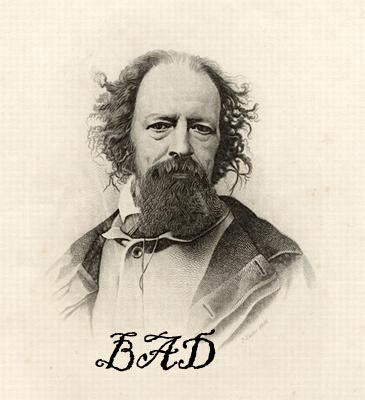
Nah. Too much stuff about aging. And children generally don’t think of the Crimean War as a particularly important international conflict. They think “The Charge of the Light Brigade” could have picked more appropriate historical subject matter to illustrate the encroachment of technology on Western ideals of martial heroism.
How about Matthew Arnold?
Frankly, I doubt they could get past the sideburns. Plus, kids strongly prefer late Victorian to early Victorian English poetry.
So that settles it! Our idea is “Air cargo business in the South Pacific in the 1940s meets the works of Rudyard Kipling.”
Then we follow the last three rules of touching up children’s stories:
1. Make sure there is an actual child in your story who does something incredibly dangerous

2. Earn the kids’ respect by designing characters to resemble important historical figures and celebrities from the era in question
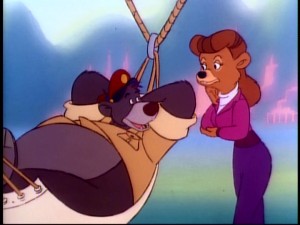
3. You can never have too many pirates, zeppelins, or zeppelin pirates
Oh, and I almost forgot — we need our hoe-down, clambake, or other related nonsense:
http://www.youtube.com/watch?v=7_cMaGt52QE
And there you have it! Disney’s TaleSpin! With Balloo the Bear as a pilot for a small, entrepreneurial cargo business in the 1940s, Shere Khan as a Wall Street venture capitalist, and King Louis as a bartender at a truck stop!
If you can’t write 50 episodes of that from here, I just don’t know what to tell you.
Wrap-up
I hope you’ve appreciated this look inside the creative process. As you can see, making hits isn’t really very hard, it’s just a matter of figuring out what doesn’t work and go with something other than that. Yeah, maybe you’d never pick out the concept behind TaleSpin on your first try, but you’d definitely nail it in two or three. Just be persistent!
“How do you get started?” Just take a look around! The successful ideas are usually pretty intuitive and easy to spot, so get moving and make the magic happen!
* – This turned out to sound a lot dirtier than I intended. Yuck.

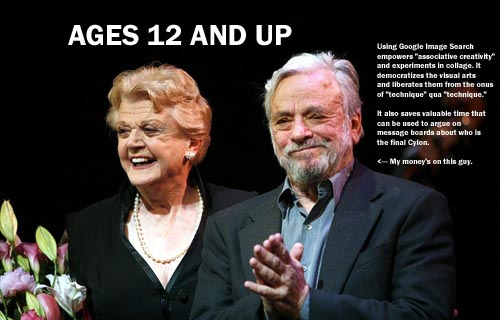
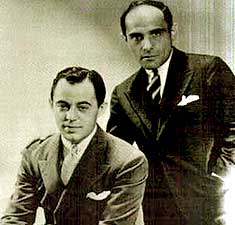


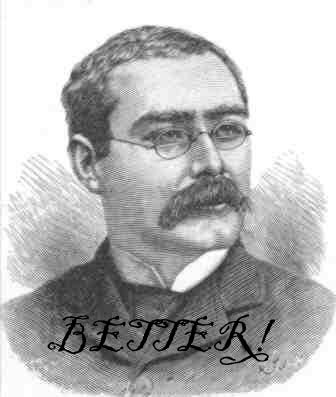
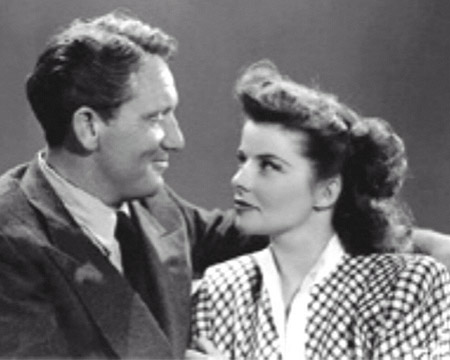
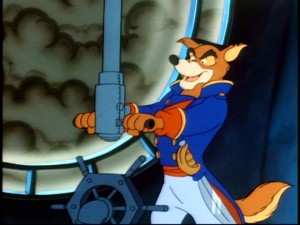
The google ad I saw when I read this post live on the site was for the new Hulk movie.
I can only assume that The Google’s AMAZING contextual ad matching algorithm is soooooooo good, it can detect even the undercurrent of Fenzel’s love for Hulk cinema, or as the french say, Film Vert.
Great post, too, by the way.
But does this help explain why this bear pilot guy, who was getting shot at by air pirates on every mission, never put guns on HIS OWN PLANE?
I think one episode actually acknowledged this, but my memory is foggy.
I was wondering what the last of the four links for “where vampires fight werewolves” could possibly be. And then I found out, and I laughed and laughed.
And if you go through exactly the same chain of logic, but decide you’d rather do a movie than a series, you get this:
http://www.youtube.com/watch?v=HJXT2OCY-Do
Well, putting guns on the cargo ship isn’t really going to help. That sort of strategy hasn’t really worked since the 1600’s. They’ll just shoot you before you see them.
I mean, I guess you could give him a ball turret, but when you’re not flying in formation, it’s kind of useless.
What he really needs is a fighter escort.
By which I mean regular Launchpad McQuack crossover episodes.
By the way, there’s a name for the strategy the allies employed against Germany during the world wars to blunt the impact of submarine warfare. Rather than send cargo vessels one at a time, they’d send them in groups, protected by destroyers and other warships.
Now if only somebody could remind me what that’s called, and perhaps employ some sort of instructional pneumonic, like a song, explaining to me why somebody shipping cargo would want to do it.
I mean, it doesn’t have to be by sea, of course.
Any takers?
fenzel, you doubt the efficacy of putting guns on the cargo ship, but keep in mind that the pilot’s typical defense against the air pirates was something along the lines of this:
1) identify enemy plane coming up behind you
2) throw a pineapple out the window
3) the pineapple passes through the propellor blades and is sliced into pieces
4) the pieces fly into the face of the enemy pilot, thereby temporarily blinding/stunning him.
5) escape!
well, now that i just worked through that logic, i realize that the guns still are not an effective deterrent against air pirates. i cede to you fenzel. now to stock up on fresh fruit…
When pineapples are outlawed, only outlaws will have pineapples.
And they are so delicious!
I hope I never see that day.
They’ll take my pineapples from my cold dead hands . . .